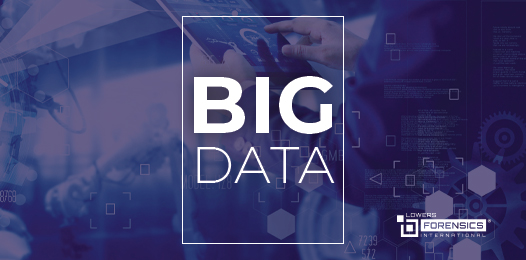Every claim brings with it a mountain of data. Some of this data is readily accessible and subjects itself to straightforward analysis. Think policy type, coverage, customer demographics, or loss history.
Other data, such as witness reports, images, email text, or client financials, are much less structured. They don’t lend themselves to spreadsheets, summaries, or quick conclusions. This makes them difficult, if not impossible, to analyze, not to mention making the process very manual, time-consuming and, well, expensive.
Enter big data analytics.
Big data analytics enable us to draw from vastly disparate data sources and deliver demonstrable patterns that can be used in decision-making. Through complex digital processing, algorithms work to connect the dots between different data points to create useful insights. So, rather than hand-sifting through reams of adjusters’ typed notes, spreadsheets, and fraud list data, insurance companies rely on big data analytics for data-based predictive models that will help them reduce costs, control fraud, and speed up claims resolutions.
Let’s look more closely at how big data analytics is having an impact on insurance claims accounting:
1. Big Data is Helping Cut Costs Associated with Insurance Claims Accounting
Quantifying Losses
Determining the size and duration of a claim is critical to understanding its estimated financial impact and establishing loss reserves. Traditionally, accurately quantifying a highly complex loss has been extremely difficult and quite expensive.
Analytics pulling from big data can help forecast potential loss by assessing past claims of a similar nature to calculate a likely loss reserve. Once the case is settled, the new data serves to feed future estimates.
Automating Claims Accounting
The same way big data can be leveraged to quantify losses, it can be used to automate other aspects of claims accounting, with very little human intervention needed. For example, insurers can pull data from past cases (e.g., images, liability data) and use predictive analytics to determine if a case is worth spending the time and money to litigate or defend. They can then allocate resources accordingly.
Managing Litigation Expenses
Insurers can manage litigation expenses with the help of big data by pulling data regarding past legal successes and failures. They can make assessments around such factors as the historical performance of legal firms across claim types, case complexity, and past settlement amounts. Knowing the statistical probabilities associated with different claims mitigates the potential of runaway litigation costs.
2. Big Data is Helping to Control Fraud
Insurance industry estimates indicate roughly one in 10 insurance claims is fraudulent, representing $30 billion lost to property/casualty fraud each year.
Fraud expresses itself in many forms: arbitrarily inflated claims, claims submitted for injuries or damage that never occurred, falsified insurance applications, or faked accidents.
Predictive analysis can ferret out many of these cases sooner by using a system of data mining and algorithms. For example, insurers can use big data to more easily flag exaggerated car accident repair costs, identify false registration claims (e.g., a driver from a high-cost insurance state register in a lower-cost state), or pinpoint opportunistic personal injury claims.
3. Big Data Is Accelerating Claims Resolution
Claim Assignments
From initial claims submission to final adjudication, each stage of the claims cycle expends precious time and resources. At the very first indication of a loss, big data can be used to quickly separate cut-and-dried claims from complex ones. This not only frees up resources in general, it allows senior adjusters to work on more complex cases.
Subrogation
Big data can also establish liability sooner by referencing past liability data and pointing adjusters to similar claims where subrogation recovery was possible.
Litigation
Finally, insurers can use predictive analytics to estimate the likelihood that a disputed claim will result in litigation. Those claims can then be assigned to more skilled adjusters who are more likely to settle the claims sooner, at a lower amount.
Big Data Analytics Drives Speed and Precision
As insurance has become a commodity, Lowers Forensics International is helping insurance companies up their game by using big data to drive the speed, accuracy, and profitability of claims.
If you’d like to learn more about the power of tapping into unstructured data to gain actionable insights, contact us.





